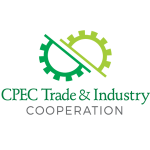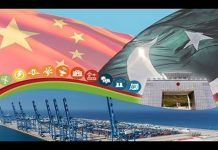Industrial Revolution had initiated in the 18th century but the world had to wait till 1959 to witness the establishment of first modern SEZ in Shannon, Ireland. As of 2006, International Labour Organization’s (ILO) database reported 3,500 zones in 130 countries and today one can find more than 4300 SEZs around the globe and the number is increasing rapidly. The reason behind this growth is the substantial development that comes with the establishment and successful operation of a SEZ. There is no specific definition of a SEZ; some call it a place where foreign companies enjoy tax benefits, other know it as an area near port for export purpose while remaining consider it as a vehicle to attract FDI; all these descriptions are correct. Countries use SEZs as a tool for industrialization. A number of examples exist in the world from Asia to Latin America that illustrate how SEZs play a vital role in economic growth; however not all the SEZs get miracles like Shenzhen in China. Out of all the countries developing SEZs, China has been the most successful. China has gained immense progress through SEZ ventures. According to an estimate, SEZs, all over the world, have created approximately 66 million jobs out of which 30 million are exclusively located in China.
Now days, a high level delegation from National Development & Reform Commission (NDRC), China is in Pakistan to discuss the future fate of our 9 SEZs. The Board of Investment and Ministry of Planning, Development & Reform is playing a very crucial role to populate those SEZs. It is very fortunate for Pakistan to have collaboration with a country like China. Under the umbrella of CPEC industrial cooperation, experience as well as technology will flow from China into Pakistan. Pakistan has never experienced anything like this in the past but there has always been a desire. This is that one opportunity where Pakistan can utilize its maximum potential and show the world what it is capable of. Nevertheless, the road to success is a long journey that requires strategically planned execution. Planning Commission of Pakistan has initially proposed 9 SEZs in consultation with provincial governments and development of Gwadar SEZ has already started. The total number of SEZs expected is 27. Pakistan does not need to go very far to find an exemplary model for its SEZs. China has developed some of the best models. China’s Suzhou Industrial Park is considered a model of inter-governmental cooperation in the world. Developed with China Singapore collaboration, the park produced 90 billion yuan worth of international trade in 2016. China arranged a visit for Pakistani officials to get a view of the largely successful venture. Pakistan should try to gain maximum benefit from experience of Chinese developers. There can be a possibility of handing over the development to China for the initial phase while the Pakistan may hold the ownership itself.
A study of SEZ models throughout the world shows that SEZs are cities in their own. They have all the modern facilities within a closed environment. With the establishment of economic zones, there will be new industries installed in Pakistan which would increase country’s production capacity. These industries would range from mining to manufacturing and food processing. World Integrated Trade Solution (WITS) reports that Pakistan is currently exporting raw materials to Afghanistan, United Arab Emirates, China, Vietnam and India since Pakistan lacks processing plants for those raw materials. Special attention is being given to the development of manufacturing and processing plants. With the establishment of SEZs, Pakistan will become capable of converting raw materials into refined products and then export it to other countries.
CPEC is that one opportunity that can be a real game changer for Pakistan. Unfortunately Pakistan has a history that is filled with bad governance and political revenge. Governments have discontinued projects of pervious governments just over political matters. This needs to be changed now. Pakistan cannot afford such activities any more. Now is the time for all the political parties to join hands to make CPEC a great success. Opportunities like theses do not come very often in a country’s history. Instead of finding odds and negativity, all the stakeholders shall put their best efforts to maximize the potential benefits as other countries archived like Mauritius, the Republic of Korea, and Taiwan, China; in Honduras, El Salvador, Madagascar; and more recently in Bangladesh and Myanmar. As a developing country with comparative advantage of low labor cost, the focus should be on multinational assembly activities within global production network for instance light manufacturing sectors like electronics, automotive components, and especially apparel.
China is losing its comparative advantage of low cost labor. Labor Intensive jobs are ready to relocate anywhere in the world from China. Sectors where China is losing its competitive advantage can become Pakistan’s latent advantage. For instance, the average salary of blue collar job in China is approx. US $ 650-750 whereas in Pakistan its US $ 150-250, 3 to 4 times lesser as compare to China. Industrial cooperation under CPEC will help us to attract those labour intensive industries and jobs that will definitely change the destiny of Pakistan. This looks difficult but is not something impossible to achieve. In 1979 before economic reforms in China, China’s GDP per capita was lower than Pakistan. However, presently China stood at US $ 8069 while Pakistan is still stuck between US $ 1400 to 1500. As mentioned earlier China’s support in the CPEC is the key to Pakistan’s success. China has all the experience that Pakistan needs at the moment. The need of the hour is to keep all the differences aside and leave no stone unturned to make CPEC as an exemplary economic between China and Pakistan for the rest to follow.
Published in Pakistan OBSERVER on 22nd July 2017

 中文
中文 Urdu
Urdu











